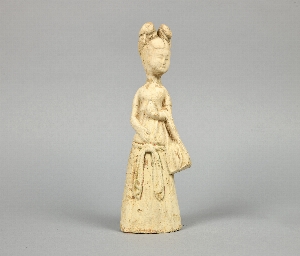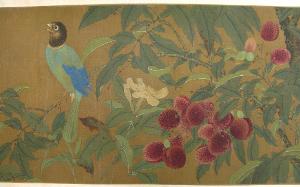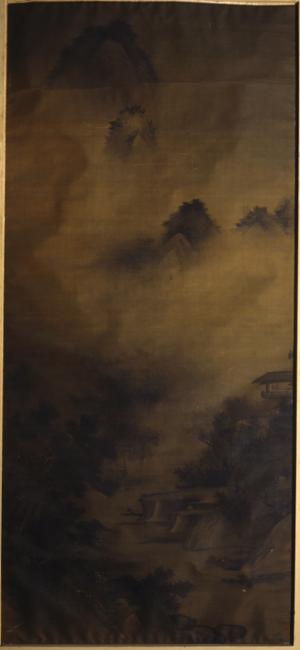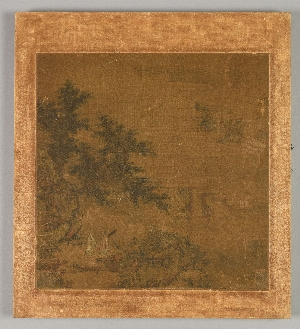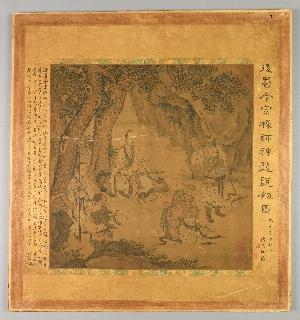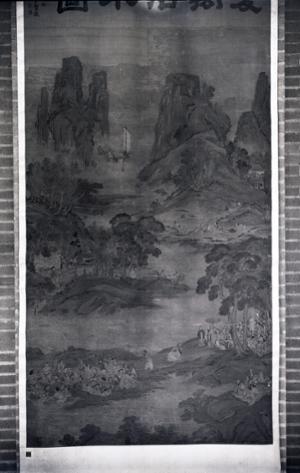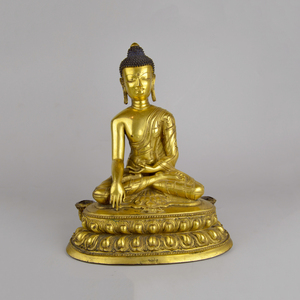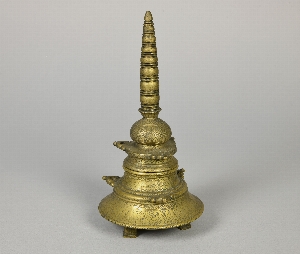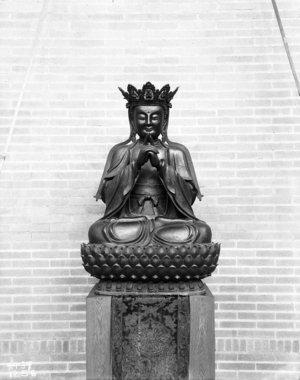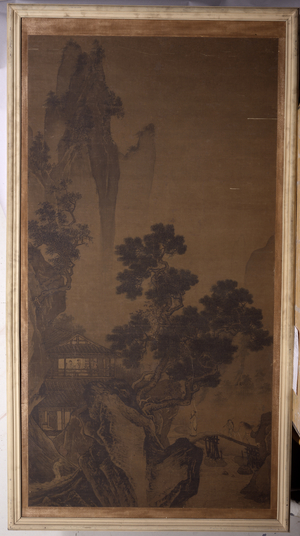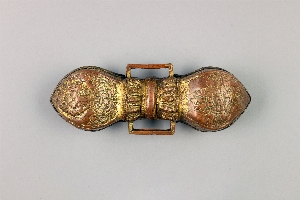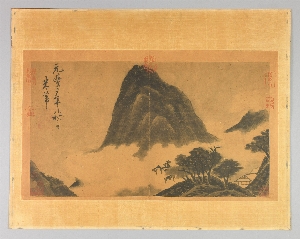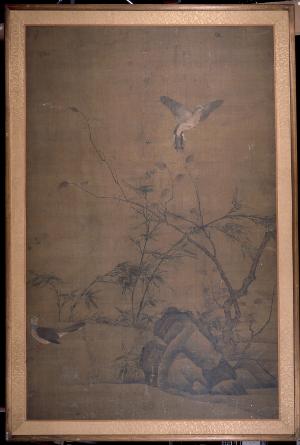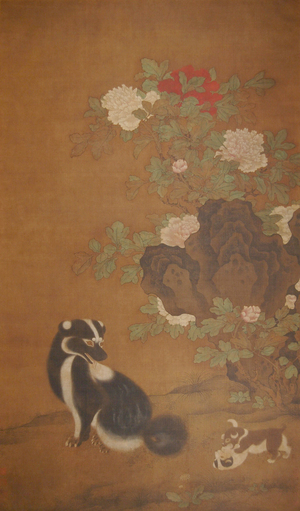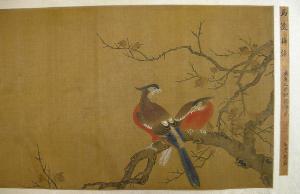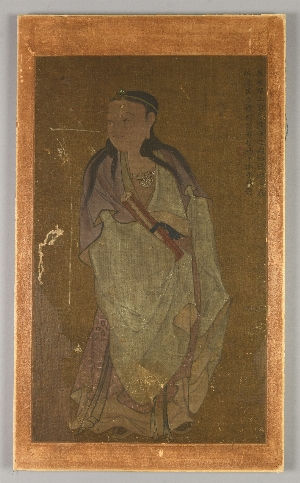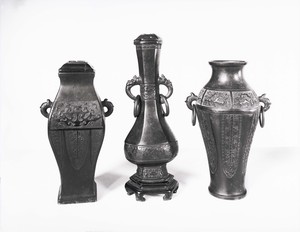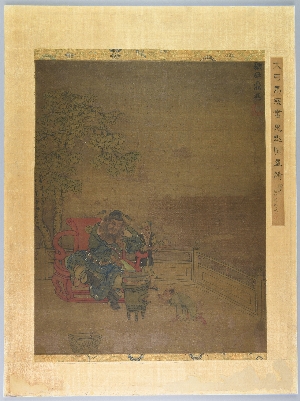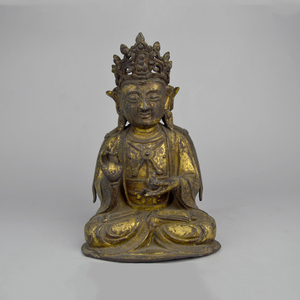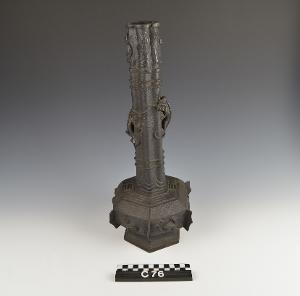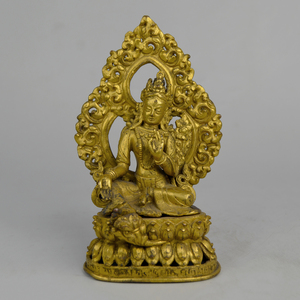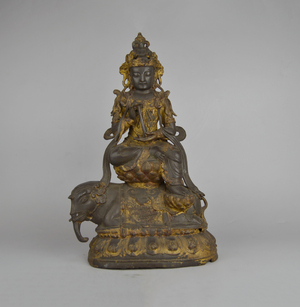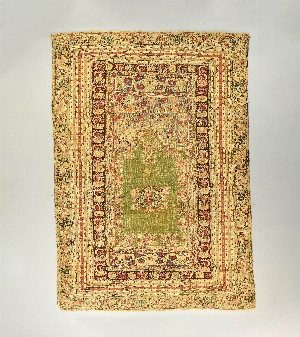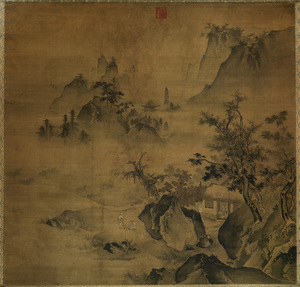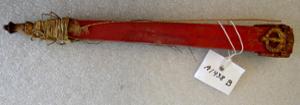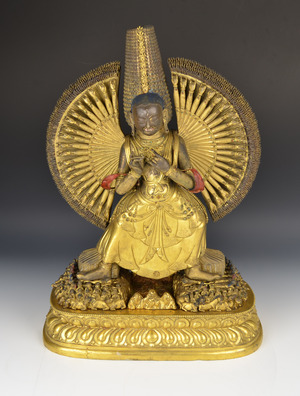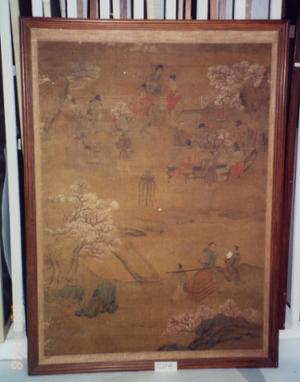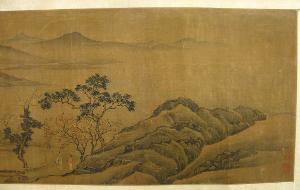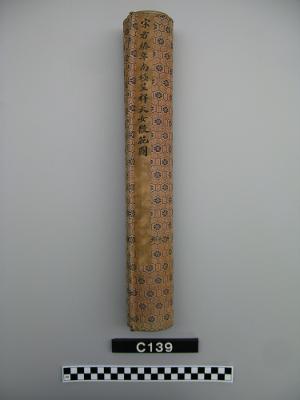Getz, John. The University Museum Exhibition of Oriental Art. Philadelphia: The University Museum, 1916.
Reference
- Object[236]
- asian[194]
- near eastern[42]
- 3D Model[2]
- ancestor portrait[1]
- axis column[1]
- bas relief[1]
- base[5]
- base fragment[1]
- basin (vessel)[1]
- beaker[1]
- book cover[1]
- bottle[2]
- bowl[15]
- bowl lid[1]
- carpet[1]
- ceremonial water vessel[1]
- cup[1]
- cuspidor[1]
- dish[1]
- ewer[2]
- figurine[3]
- fishbowl vase[4]
- funerary ewer[1]
- gem[1]
- hanging altar lamp[1]
- headdress[1]
- idol[1]
- ink bottle[1]
- jar[3]
- jar lid[1]
- jug[2]
- lid[1]
- magic horn[2]
- manuscript[1]
- mirror[1]
- mortar[2]
- mortuary ewer[1]
- mortuary figurine[6]
- mortuary house[1]
- mortuary lamp[1]
- mortuary pig sty[1]
- painting[37]
- pedestal[1]
- pen case[1]
- phurpa[1]
- plaque[1]
- plate[10]
- prayer rug[1]
- relic box[1]
- reliquary[3]
- reproduction[5]
- rice plate[1]
- ritual object[2]
- ritual vessel[4]
- scepter[4]
- scepter fragment[1]
- scroll painting[9]
- shield[1]
- skull bowl base[1]
- stand[4]
- statue[27]
- statue base[5]
- statue fragment[2]
- statuette[20]
- statuette content[1]
- stela[1]
- stela base[1]
- stupa[4]
- sweetmeat dish[1]
- table[1]
- teapot[1]
- temple bell[1]
- textile[3]
- textile fragment[1]
- textile panel[1]
- thangka[2]
- vajra bell[1]
- vase[13]
- vessel[1]
- votive[1]
- war drum[1]
- water container[2]
- water vessel[2]
- wine jar[1]
- wine jar lid[1]
- wine vessel[2]
- agra[1]
- asia minor[2]
- bankipur[1]
- beijing[2]
- benares[1]
- canton[6]
- chihli[5]
- china[132]
- greece[4]
- hamadan[1]
- hebei[9]
- henan[6]
- hyderabad[5]
- india[9]
- iran[27]
- isfahan[1]
- japan[4]
- jiaozuo[1]
- jining[5]
- karagan[1]
- korea[1]
- lhasa[1]
- lindos[2]
- mesopotamia[1]
- nepal[17]
- persia[6]
- qixian monastery[1]
- raqqa[2]
- rayy[9]
- rhodes[4]
- shaanxi[3]
- shandong[5]
- sultanabad[6]
- syria[2]
- thanjavur[1]
- tibet[34]
- xiangtangshan[7]
- yixian[2]
- zenjan[2]
- 14th century[1]
- 15th century[1]
- 16th century[2]
- 17th century[5]
- 18th century[1]
- 19th century[2]
- early qing dynasty[1]
- five dynasties[1]
- han dynasty[8]
- jin dynasty[2]
- joseon dynasty[1]
- kangxi[2]
- later han dynasty[1]
- liao dynasty[2]
- ming dynasty[40]
- northern qi[1]
- northern qi dynasty[12]
- northern song dynasty[1]
- qing dynasty[44]
- sassanian period[1]
- shah abbas period[1]
- song dynasty[5]
- sui dynasty[1]
- tang dynasty[11]
- wanli[2]
- wei dynasty[1]
- yuan dynasty[4]
- 8 buddhist symbols[1]
- abhaya mudra[1]
- abhedya[1]
- akshobhya buddha[1]
- amida buddha[2]
- amida nyorai[1]
- amitabha buddha[1]
- ananda[2]
- ancestor portrait[1]
- animal[1]
- animals[1]
- apsaras[1]
- arabic inscription[2]
- architecture[1]
- arhat[3]
- attendants[4]
- avalokitesvara[2]
- bag[1]
- bagua[1]
- bakula[1]
- bamboo[4]
- baptism of buddha[1]
- bat[1]
- bats[1]
- benediction[1]
- bhumisparsa mudra[3]
- bird[5]
- bird spirit king[1]
- birds[8]
- birth of sakyamuni[1]
- blue bell[1]
- blue bells[1]
- boat[2]
- bodhisattva[12]
- bodhisattva head[1]
- bodhisattvas[1]
- brahma[1]
- buddha[8]
- buddhist symbols[2]
- carnation[2]
- chinese historical figure[5]
- daoist figure[2]
- deer[4]
- demon[2]
- demons[2]
- dog[2]
- dorje[2]
- dragon[5]
- dragons[3]
- elephant[2]
- figures[2]
- fish[5]
- flower[5]
- flowers[6]
- fruit[2]
- fu dog[2]
- fu lion[2]
- fu xi[5]
- fungus[3]
- girl[2]
- guanyin[3]
- horse[4]
- horses[2]
- human figures[9]
- incense burner[3]
- inscription[11]
- iris[2]
- kanthaka[2]
- landscape[11]
- legend[5]
- lion[11]
- lotus[9]
- lotus bud[2]
- luohan[7]
- maitreya[2]
- makara[3]
- manjusri[2]
- mask[3]
- middle aged woman[3]
- monks[3]
- mountain[2]
- nu wa[5]
- ox[2]
- philosophers[2]
- phoenix[3]
- pratyekabuddha[2]
- qilin[2]
- river[3]
- rocks[3]
- ruyi[2]
- sakyamuni buddha[3]
- stupa[6]
- thunderbolt[3]
- tree[2]
- trees[3]
- tsongkhapa[2]
- tulip[3]
- vajra[6]
- winter[2]
- woman[2]
- chinese language[27]
- cufic[3]
- kufic[3]
- naskhi[1]
- nepalese language[2]
- sanskrit[4]
- tibetan dbu can script[1]
- tibetan language[10]
- alabaster[1]
- brass[18]
- bronze[39]
- ceramic[45]
- clay[14]
- cloisonne[2]
- cloisonnee[1]
- copper[7]
- copper alloy[15]
- coral[2]
- dolomite[2]
- enamel[1]
- gilding[6]
- gilt[12]
- glass[2]
- glaze[7]
- gold[6]
- gold leaf[3]
- hemp[1]
- horn (animal part)[1]
- ink[4]
- iron[1]
- jade[5]
- lacquer[1]
- lead glaze[3]
- limestone[13]
- marble (stone)[10]
- metal[5]
- paint[8]
- paper[5]
- papier mache[1]
- paste[1]
- pigment[13]
- porcelain[5]
- realgar[1]
- rhinoceros horn[1]
- satin[1]
- silk[24]
- silver[11]
- stone[11]
- stoneware[1]
- turquoise[2]
- velvet[2]
- wood[12]
- bas relief[1]
- blue and white ware[5]
- braided[1]
- brocade[4]
- carved[35]
- cast[8]
- casting[1]
- ceramic[3]
- chased[2]
- cloisonne[4]
- cut out[1]
- damascene[6]
- embossed[3]
- enameled[1]
- engraved[6]
- famille verte[1]
- filigree[1]
- fired[22]
- formed[2]
- gilded[8]
- gilt[11]
- glazed[39]
- granulation[1]
- high relief[1]
- incised[2]
- inlaid[1]
- inscribed[4]
- kuang-yao[2]
- lacquered[1]
- low relief[3]
- openwork[1]
- painted[59]
- paper mache[1]
- pasted[1]
- polychrome[1]
- relief[1]
- repousee[1]
- three color glaze[2]
- unglazed[1]
- woven[3]
- fong chun nien[1]
- huang jucai[1]
- huang ying-shen[1]
- li fan[2]
- liu songnian[1]
- lu ji[1]
- ma lin[1]
- ma wen-pi[1]
- qiu ying[2]
- style of li gonglin[1]
- tang yin[3]
- unknown[6]
- wang e[1]
- wang shichang[1]
- wu chen[1]
- yi yuanji[1]
- yuan jiang[1]
- zhao lingsong[1]
- zhao mengfu[1]
- zhou chen[1]
- 易元吉[1]
- actual citation[236]
- general reference[2]
1 - 30 of 236 Records
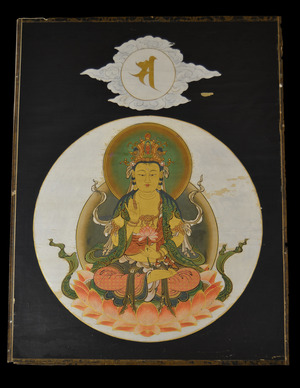
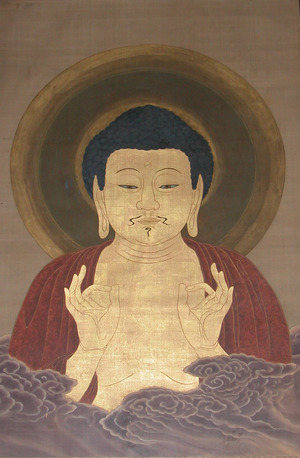
1 - 30 of 236 Records


